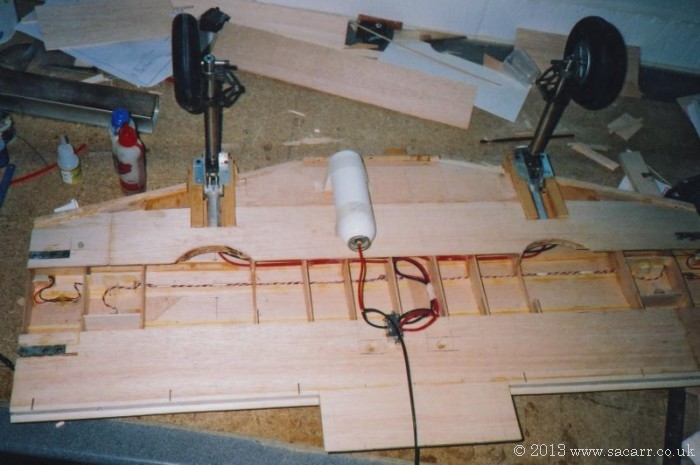|
VULTEE
A-35B VENGEANCE |
|
| Wingspan
- 8 feet Length - 6 feet 6 inches Engine - Zenoah 38cc, 3W-40cc Radio - Futaba FF7 Features |
The
A-35B Vengeance was built as a second single engined all weather
aircraft, and a spare in case I had technical problems with the P-47N.
Rather than another fighter, I wanted something a bit different, and the
A-35B fitted the bill, plus I really liked the unusual wing shape. The
real aircraft was designed as a dive bomber, but in 8th Air Force use,
as I modelled, it was used for target towing. Unlike my P-47, the
Vengeance uses an all built up construction. The cowling was modified
from a spare P-47 moulding, slotted and widened at the bottom to give a
more oval cowl rather than egg shaped. |
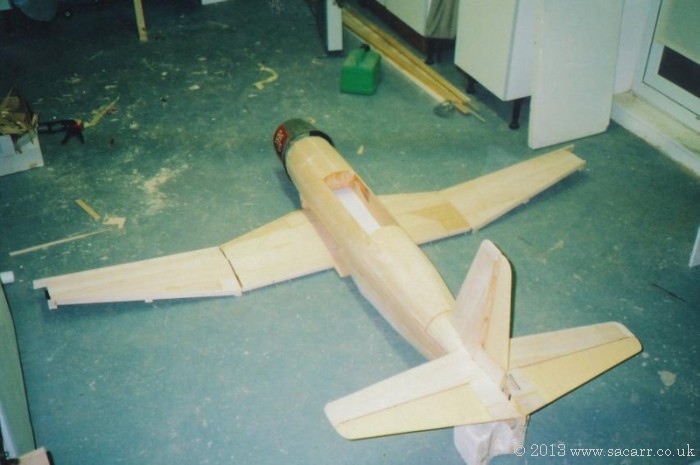 |
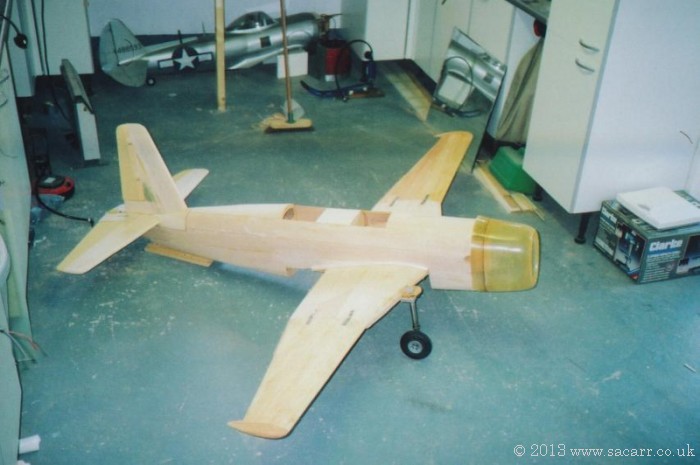
|
| The
airframe was built in five sections; the two outer wings, centre wing
panel, fuselage and fin/tail unit. For transport either in the car or
trailer, the centre wing panel remained on the fuselage, and only the
tail and outer wing panels would be removed. |
|
| The
air tanks for the retracts ended up in the bomb bay. Initially placed at
the front, they were moved to the rear to simulate the two bombs that
could be carried internally. The Century Jet 90 degree twisting retracts
weren't badly mad, but the design had to be modified to work correctly.
The torque links also had to be removed and repositioned 90 degrees from
their original position in order to match the design of the real
aircraft. The links actually protrude through holes in the landing gear
doors.
|
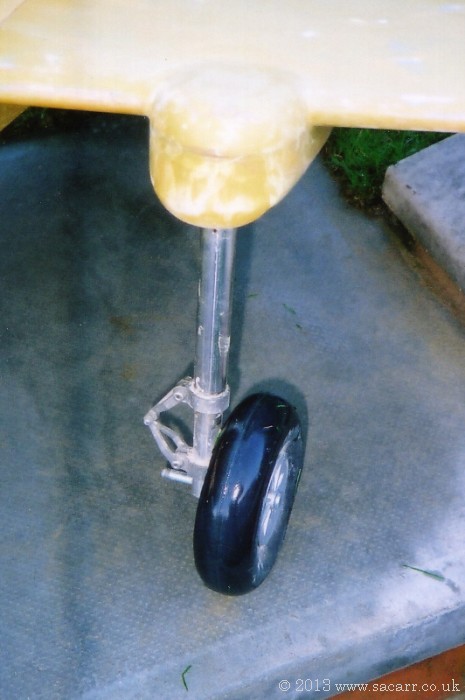 |
| After a couple of months, most of the airframe was built, glassed and a layer of filler/primer applied and rubbed back down. | |
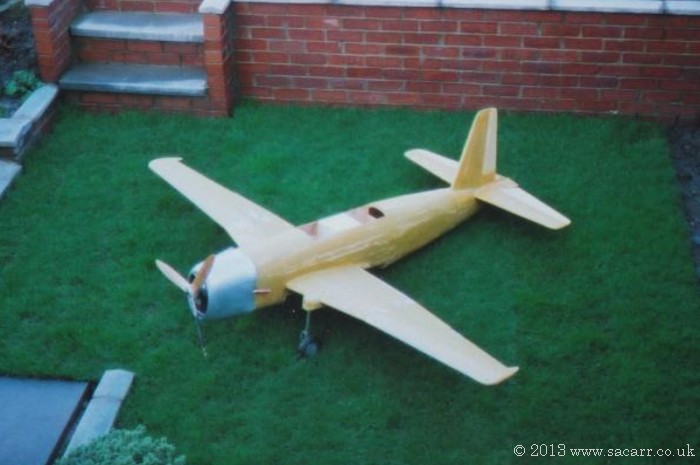 |
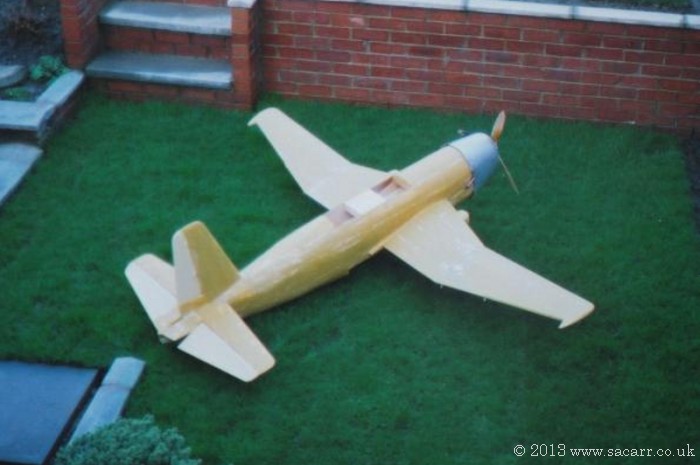 |
| With
the surface prepared, the panel lines and rivets were applied and then
the aircraft was given a silver undercoat. While the centre wing is
still unpainted, the first colour has been applied to the cowl and fin. |
Cockpit
details were made from styrene. The instrument panel was made from three
layers, with the instruments attached behind the glazing, giving it
depth. |
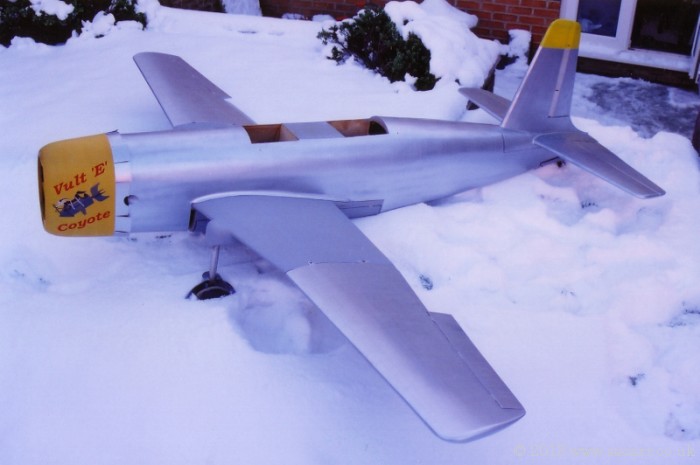
|
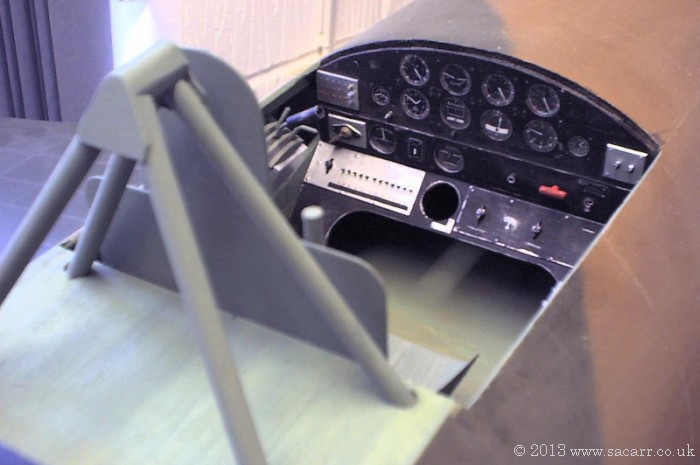
|
| Below
right, all the camo and markings have been applied and the plug has been
started. |
|
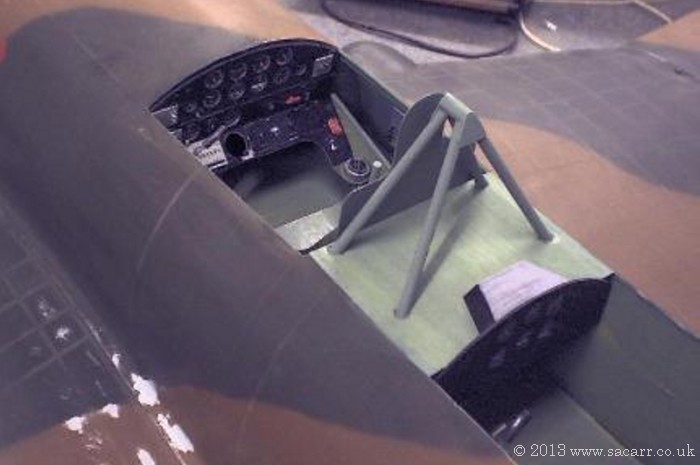
|
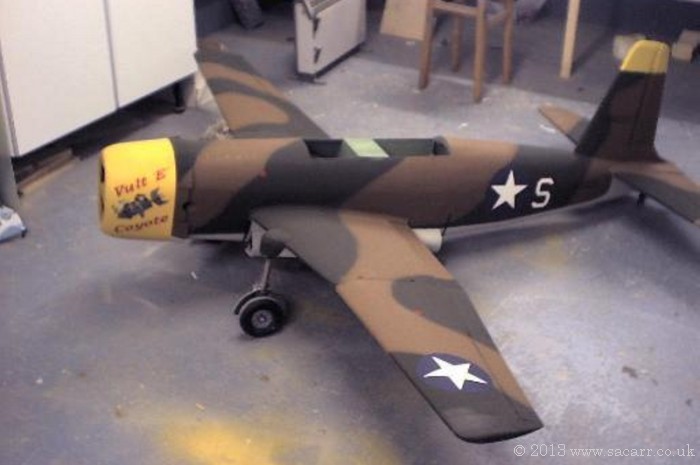 |
| The
first engine fitted was a Zenoah 38. The standard silencer fed backwards
into a large thick steel tube expansion chamber. This big piece of steel
was used to bring the C of G to the correct position. |
This
picture shows a close up of the fictional artwork. The exhausts exited
either side of the aircraft in the scale position. The three blade prop
was a non-flying version for static photos. |
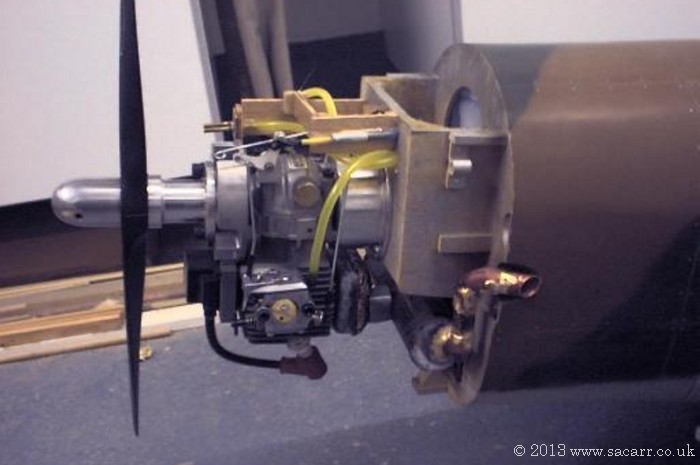 |
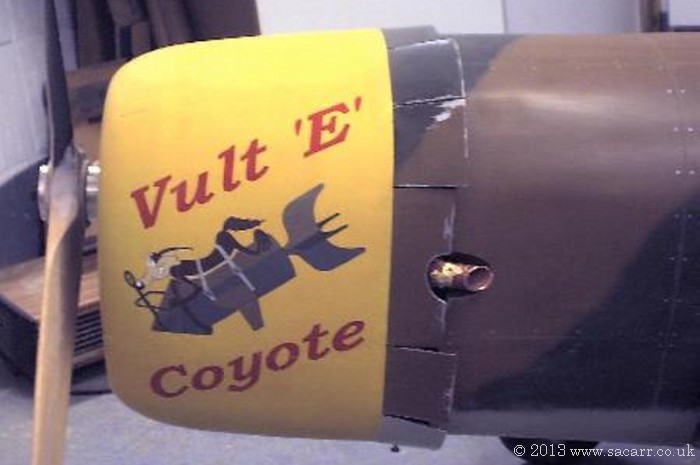 |
| The
paintwork was given a rub down with wire wool to dull it off and to
bring out the surface detail and other signs of wear. |
The
canopy was fairly long, and was made from several sections. A white
styrene version was used, for the canopy frames. |
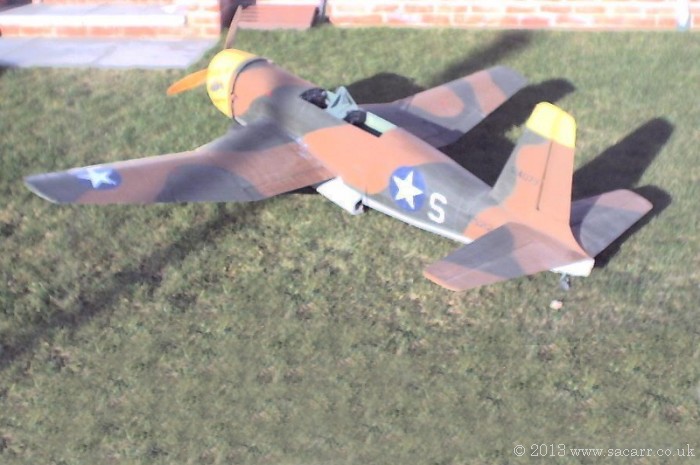 |
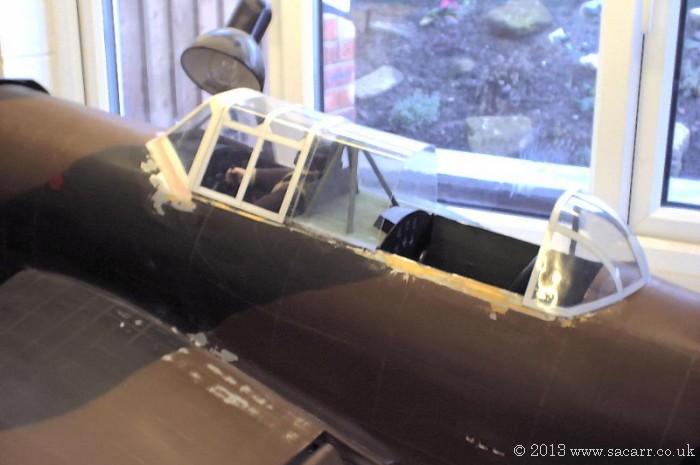 |
| With
the canopy complete and fitted, the model was done. It only took four
months from design to flight. |
|
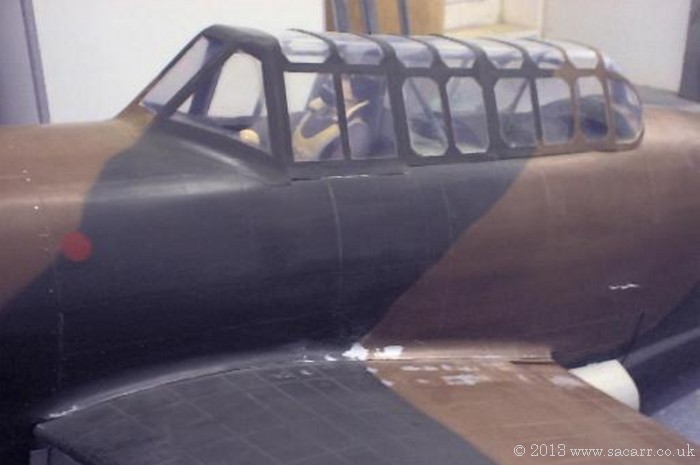 |
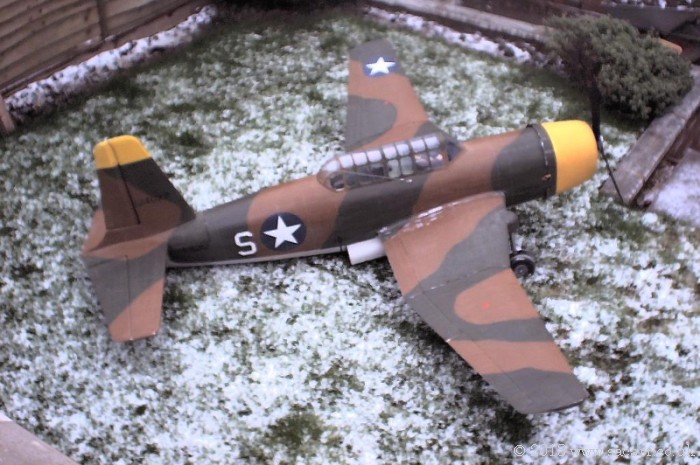 |
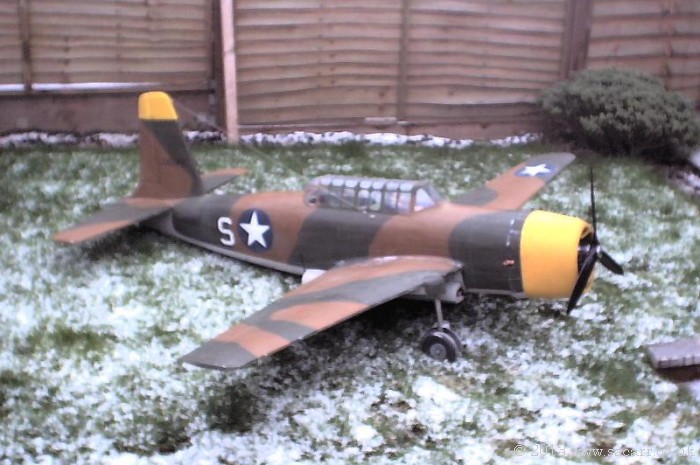 |
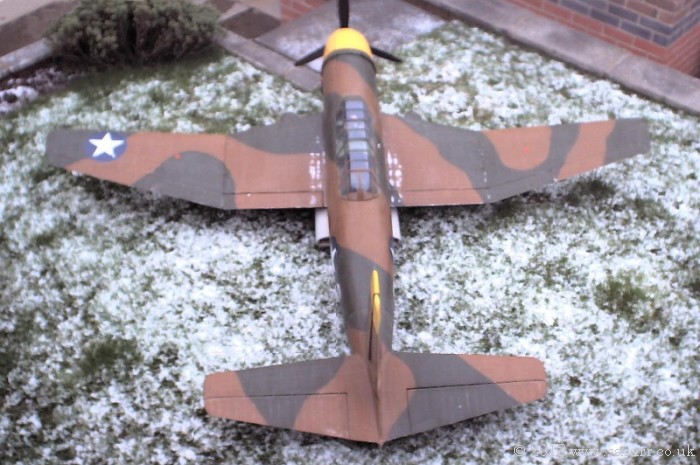 |
| PAGE 2 | |
